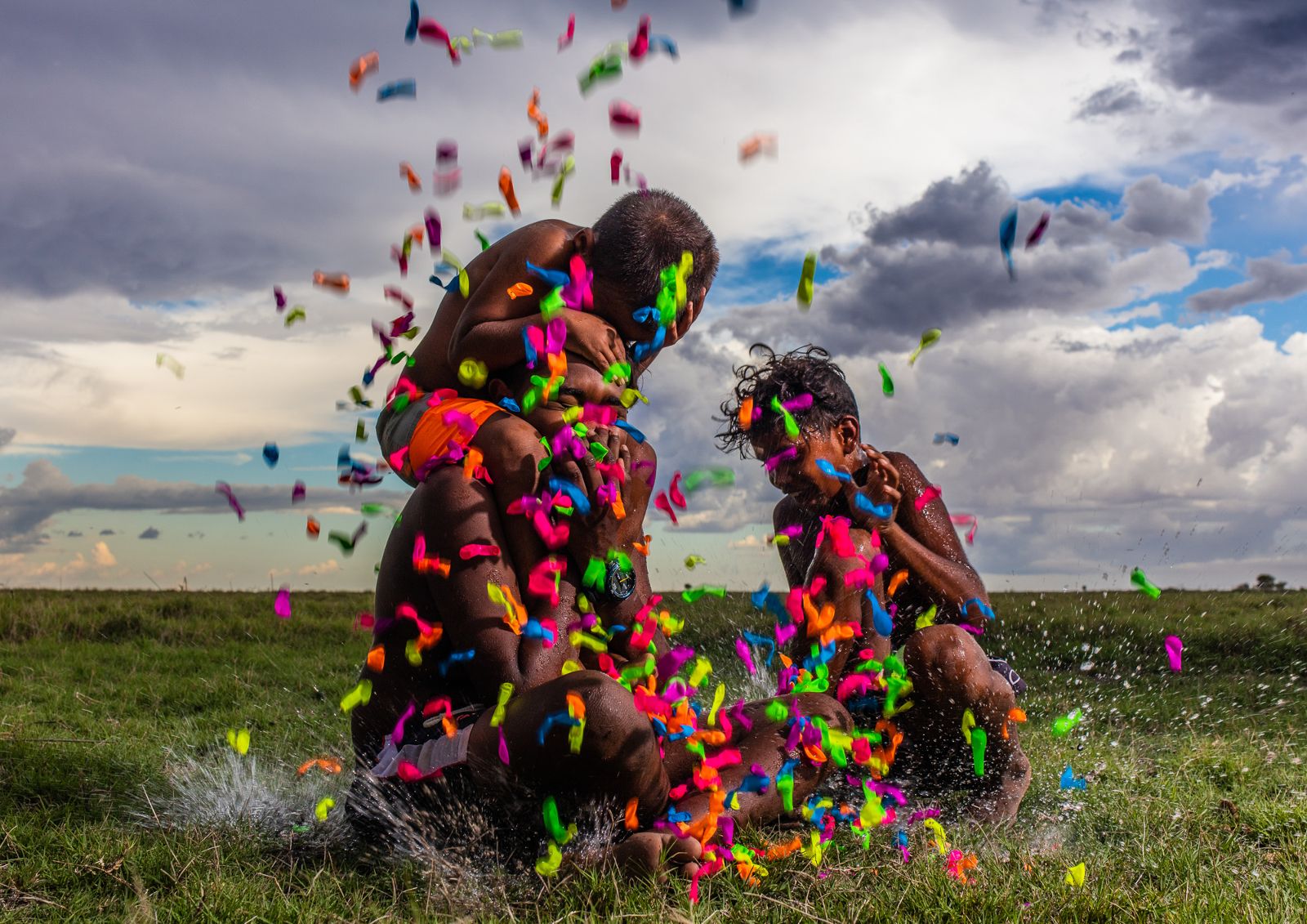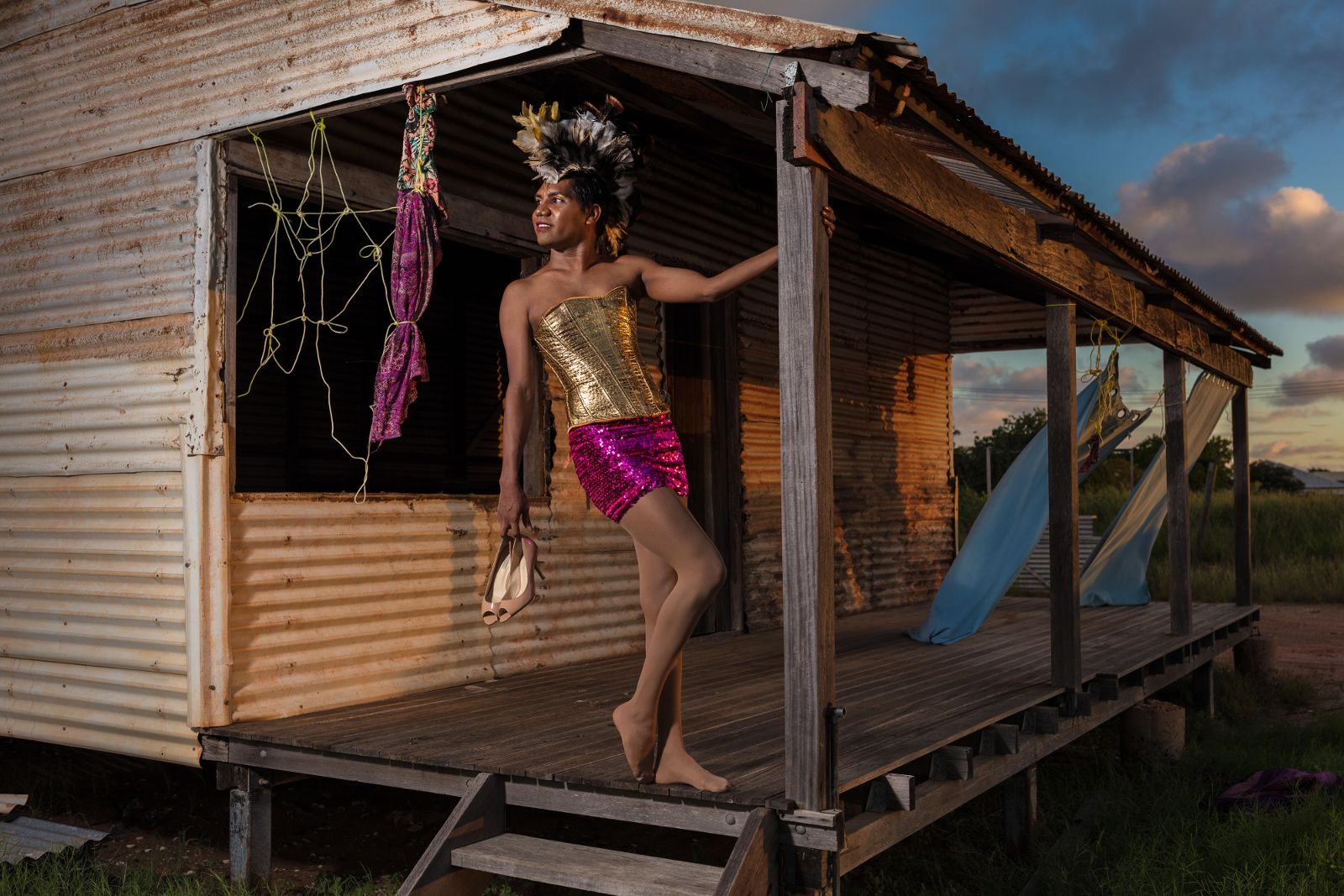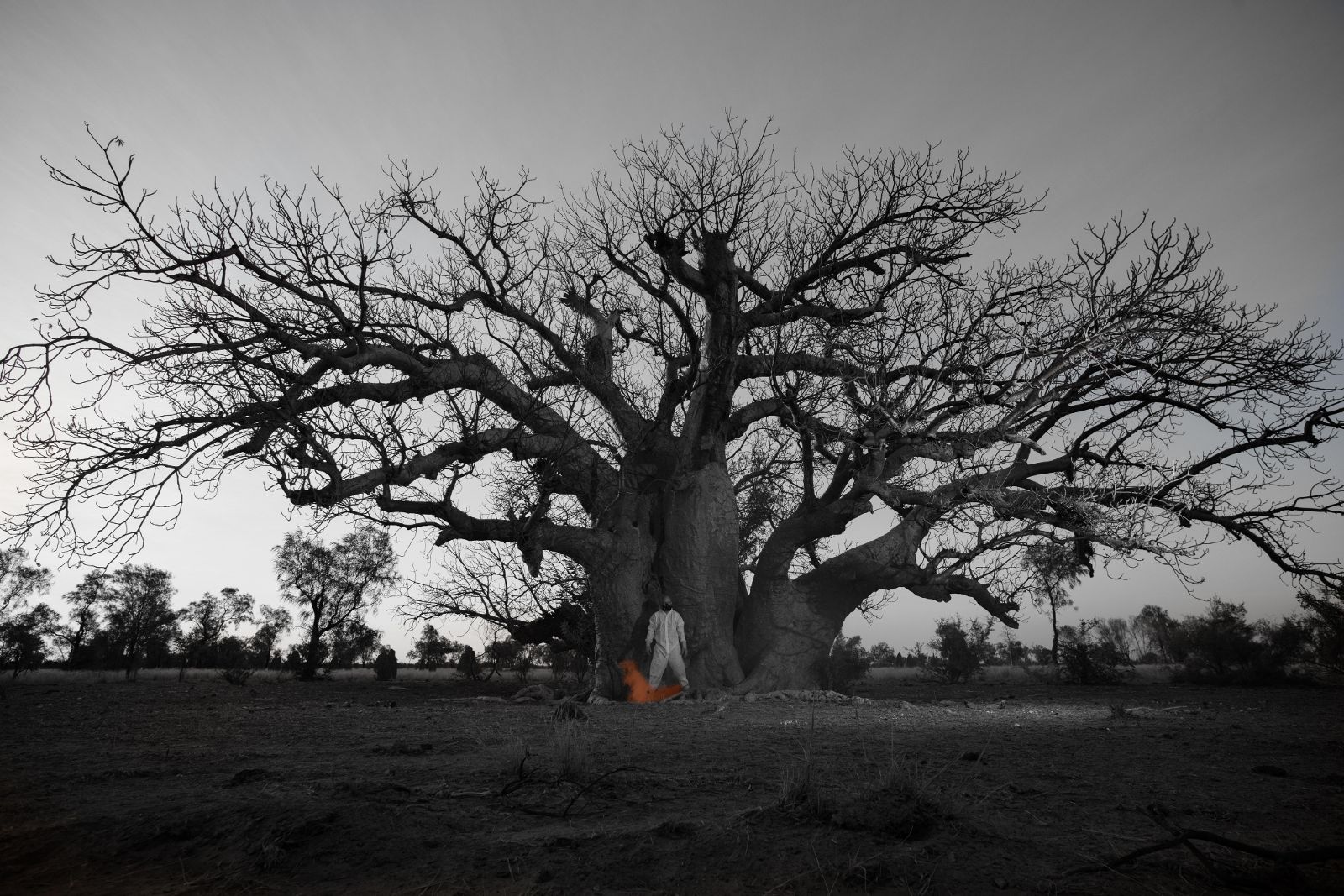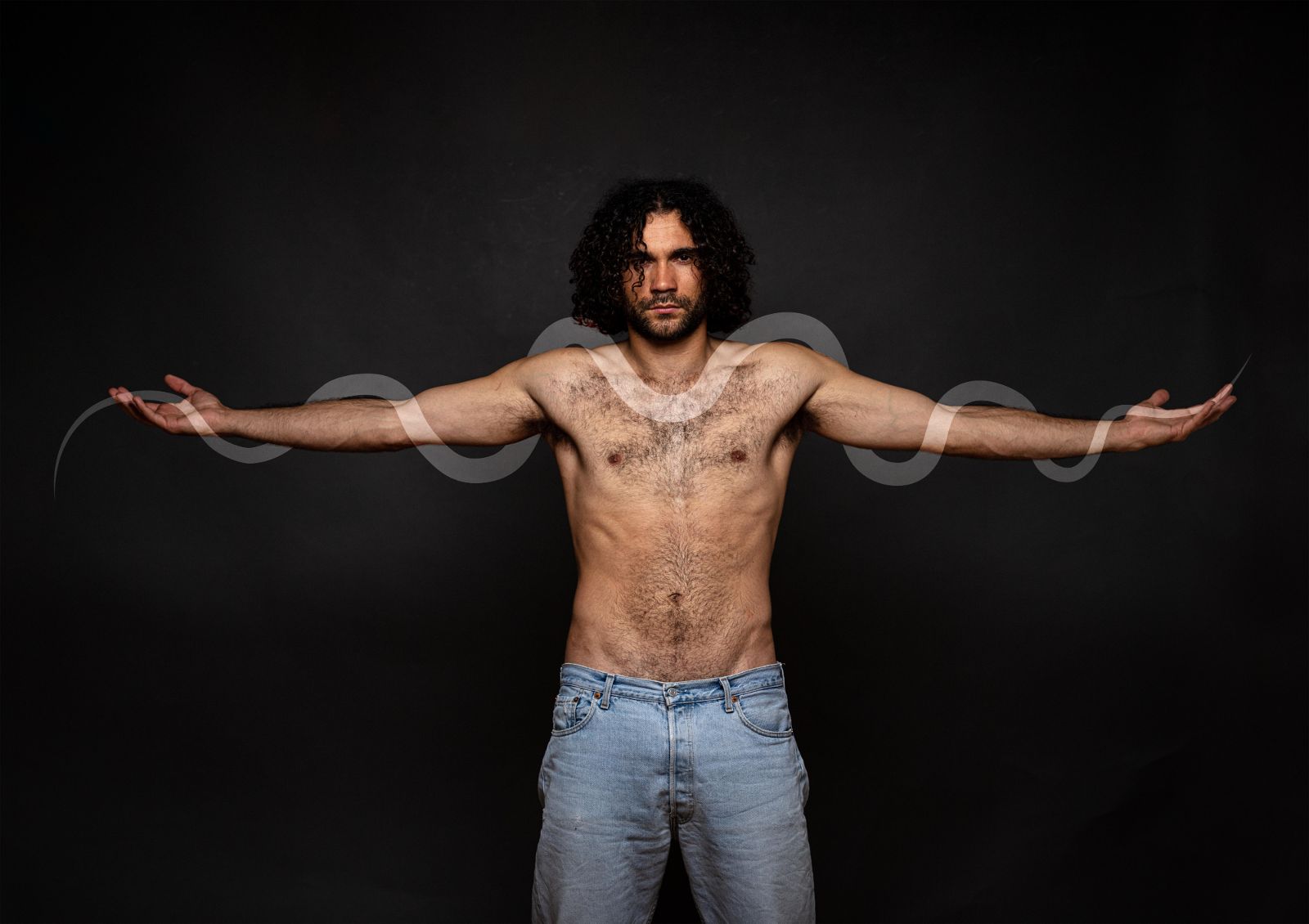.jpg)
With eight interconnected First Nations exhibitions, BlakLight makes a bold statement through subtle incursions to the Art Gallery of Western Australia (AGWA), questioning the extractive relationships between institution/curator and Indigenous culture/artist. Promoted as ‘Every floor, every wall, every channel. First Nations art takes over AGWA’, the approach by a re-invigorated gallery delivers a powerful result.[1]Appointed in September 2021, Curator and Head of Indigenous Programs Clothilde Bullen is aware that the art industry’s desire for Blak work still operates within the colonial frameworks and architectures which deride First Nations people. And rather than hide these contradictions, Bullen chooses to reveal them by engaging with the building’s settler colonial origins. In a recent interview she described how
Colonised countries have been reckoning with their histories for centuries, and art is a powerful way to spark conversations about some of the issues that affect First Nations people and communities who were and continue to be impacted.[2]
Across its different spaces, BlakLight confronts these histories and moves towards an anti-colonial, responsive and resistant way of working and exhibiting First Nations art in order to ignite the urgent conversations needed. On the top floor of the building featuring expansive views of the city’s skyline as you exit the lift, a collection of textiles by the Bábbarra Women’s Centre in Maningrida hang from the ceiling. Hand-painted using bush brushes made from manyilk (sedge brush; Cyperus javanicus), the intricate screen prints distil the built form which characterises Boorloo / Perth’s CBD and gracefully alters the building’s architecture and institutional authority. Our view shifts towards the women’s creations which tell ancestral stories of Arnhem Land in contrast to the skyscrapers and urban development which the full-length windows on the top floor were designed to illuminate. This is an important device for an intervention that takes over the entire gallery.
Like the Bábbarra Women’s textiles, art work on the rooftop also skews the gallery’s Eurocentric architecture. Recently refurbished and designed to show the city from another perspective, it includes the 2021 commission of a large-scale painting by Minang / Wardandi / Bibbulmun artist Christopher Pease. Titled Targets, the 34–metre long, 5–metre high light-based work boldly wraps the exterior walls in the rooftop’s centre as a dramatic critique of the colonial legacy which buildings like AGWA leave on Whadjuk Noongar Boodjar. A reworking of Frederick Garling’s colonial work Swan River – View from Fraser’s Point (1827), the mural asserts the ongoing value of the Derbarl Yerrigan — the Noongar name for the Swan River — and visualises the survivance of Noongar people despite the Western architecture that now surrounds them. Enormous shooting targets are placed over the landscape as settlers are seen in the foreground watching over the river as Pease explicitly references how Noongar people were and continue to be targets of colonisation. But despite invasion of Country, Noongar communities and culture survive and continue to fortify their presence within a built environment that was intended to dismantle it.
The urgent statement that Pease makes in Targets echoes through the curatorial decisions to engage with the European sculptures on the rooftop. Rather than pretend that the process of colonisation is momentarily muted when intuitions commission Blak artists, BlakLight acknowledges the incongruous tensions of celebrating Indigenous work in spaces complicit with the ongoing impact of invasion. Worimi artist, academic and educator Genevieve Grieves describes how this denial ‘that has been termed doubled violence, undermines any opportunities for recognition, healing and transformation from the violent past.’[3] BlakLight recognises this and confronts its role in invasion narratives rather than denying them. This is achieved through the Rooftop Rewritten program, an important engagement with the building’s colonial collection of statues from the Western art canon. Purchased in the 1970s and 1980s the permanent collection of statues on the gallery’s rooftop reflects settler Australia’s Eurocentric origins where European monuments symbolise the nation’s attempt to assert its identity over an existing culture. Instead of ignoring this, Blak artists and curators were invited to write their own labels for each sculpture, describing what these icons of western art mean to First Nations people. For example, Oliffe Richmond’s Figure, (1964) is described in a label by Glenn Iseger-Pilkington, a Nhada and Nyoongar curator as carrying
[the] ghosts of our painful past. It holds within it an enduring sadness, a darkness and a weight beyond its physicality. A headless figure, bound? A body bag? Or something else?
His response confronts these sculptures’ uncomfortable weight and lessens the violence Greives speaks of because we are asked to acknowledge their effect and the recent history where major galleries valorised this form of art. The institution is haunted by Western art’s colonial legacies, and making this history visible moves us closer to the possibility of healing and transformation.

Engaging with the building’s coloniality means that a deeper and honest conversation with First Nation artists and audiences can occur. This is critical given that the artists exhibited carry urgent messages which demand truth telling to counter the violence of denial. Michael Jalaru Torres’ photographic exhibition Jurru is an evocative example of this. The series of large photographs taken on his Country document both the power of Blak survivance and the realities of colonialism. The mostly self-taught Djugun and Yawaru artist gravitated towards photography because of its accessibility and the challenge of capturing stories in single images. He has described how ‘through my portraits of people taken ‘on country I promote positive and individualised representations of Indigenous people.’[4] His work defies the damaging stereotypes of remote Indigenous communities proliferated in mainstream media which dramatise poverty and despair. Instead, he celebrates Blak survivance in the Kimberley and Broome regions where he is from. In an ABC article he proclaimed
I'm dead set against photographing my people in that poverty porn way. A lot of non-Indigenous photographers come into my region, and other regions, and make a living and name for themselves by capturing people in community life and making it look like a third world country.[5]
His standpoint radiates in the aptly titled photograph Wirriya (Happy) from the 2019 series Native. It captures the kinship of family as young kids playfully embrace the multi-coloured water bombs which splatter across the three children laughing at the injection of colour and water. Strikingly connected to their Country, the emergence of a new materiality doesn’t impact their ongoing sovereignty but shows a coexistence between differing worlds. Similarly Future Hunter from the same series depicts a young boy who boldly stares at the camera confidently ready for his future which will embody his cultural rights and custodianship to his Country. But while ‘hunter’ could imply a specific Indigenous practice of hunting, the boy holds a blow-up plastic turtle rather than the expected ‘bush tucker’ which would affirm the anthropological gaze placed on Indigenous peoples. In the era of climate catastrophe, both Wirriya and Future Hunter are tinged with grief as we witness the introduction of plastics on Country, symbolising colonialism’s role in the continent’s environmental demise. But Torres powerfully resists images of loss and desperation, instead depicting cultural resilience and survivance as these young children find ways to thrive amid ongoing colonisation.

Images like Unjal from the 2017 series Exif continue to document a community and culture that flourishes through the exuberant portrait of a Sistergirl. But within the abundant bliss that Torres expresses, he equally probes darker histories of often sanitised colonial racism. The arresting photograph 245T from the series Agent Orange 2016 speaks to the environmental atrocities inflicted on his Country. A lone figure in a hazmat suit appears to scan the environment as if he is the last figure left after a nuclear fallout. Minuscule in scale against a large tree, he surveys the last remaining signs of life. The photo refers to the Western Australia Government’s use of Agent Orange [2,4,5-T] to spray weeds in the Kimberley region between 1975 and 1985. The images allude to the horrific accounts of Aboriginal men contracted by the Agriculture Protection Board (APB) during this period, spraying highly toxic chemicals without being provided any protective gear. Torres’ photographs soothes the violence of denial that Grieves speaks of by exposing past horrors that colonising histories erase. Remembering is part of surviving: it speaks back to the silencing of an ugly past that settler wealth and amnesia tries to erase.

Through this exhibition Torres creates a complex tapestry where Blak excellence and joy is interwoven within the need to tell, remember and engage with darker truths. Photos like Balance and Within from the 2020 series Jurru show a confident young man as the faint outline of a serpent slides across his body. The contemporary figure reflects a spiritual being which transcends the narrative of cultural loss and destitution which still persists in the mainstream imagining of Indigenous peoples. Torres’s work embodies resistance, strength and commitment to community, which undermines the stereotypes white settler Australia projects. But it also refuses to dilute the truth. Exhibited in a gallery space that consciously reflects rather than denies its own complicity in colonisation, Jurru resonates with the overall success of BlakLight. With its focus on artists from Boorloo, the Pilbara and the Kimberley this nation-wide story has a distinctly Western Australian richness. Overall, it is a significant series of exhibitions which cleverly avoids the self-aggrandising or paternalistic role that museums and art institutions have traditionally played when curating Blak art.

Footnotes
- ^ For a full listing of BlakLight exhibitors see https://artgallery.wa.gov.au/whats-on/exhibitions/blaklight
- ^ Daniela Frangos, “Blaklight at AGWA”, Broadsheet https://www.broadsheet.com.au/perth/event/blaklight-agwa accessed 1 May 2022
- ^ Genevieve Grieves, Connecting with wounded spaces, Un Magazine 12.1, https://unprojects.org.au/article/connecting-with-wounded-spaces/
- ^ Blacklight artist’s talk – Michael Jalaru Torres, Art Gallery of Western Australia, 14 April 2022 https://artgallery.wa.gov.au/whats-on/events/blaklight-artist-talk-michael-jalaru-torres
- ^ Teresa Tan and Rudi Bremer, Broome artist exposes Australia's dark chapters of history with photographic series, ABC Arts, 13 May 2018, https://www.abc.net.au/news/2018-05-13/michael-jalaru-torres-explores-australias-history-of-slavery/9726892
